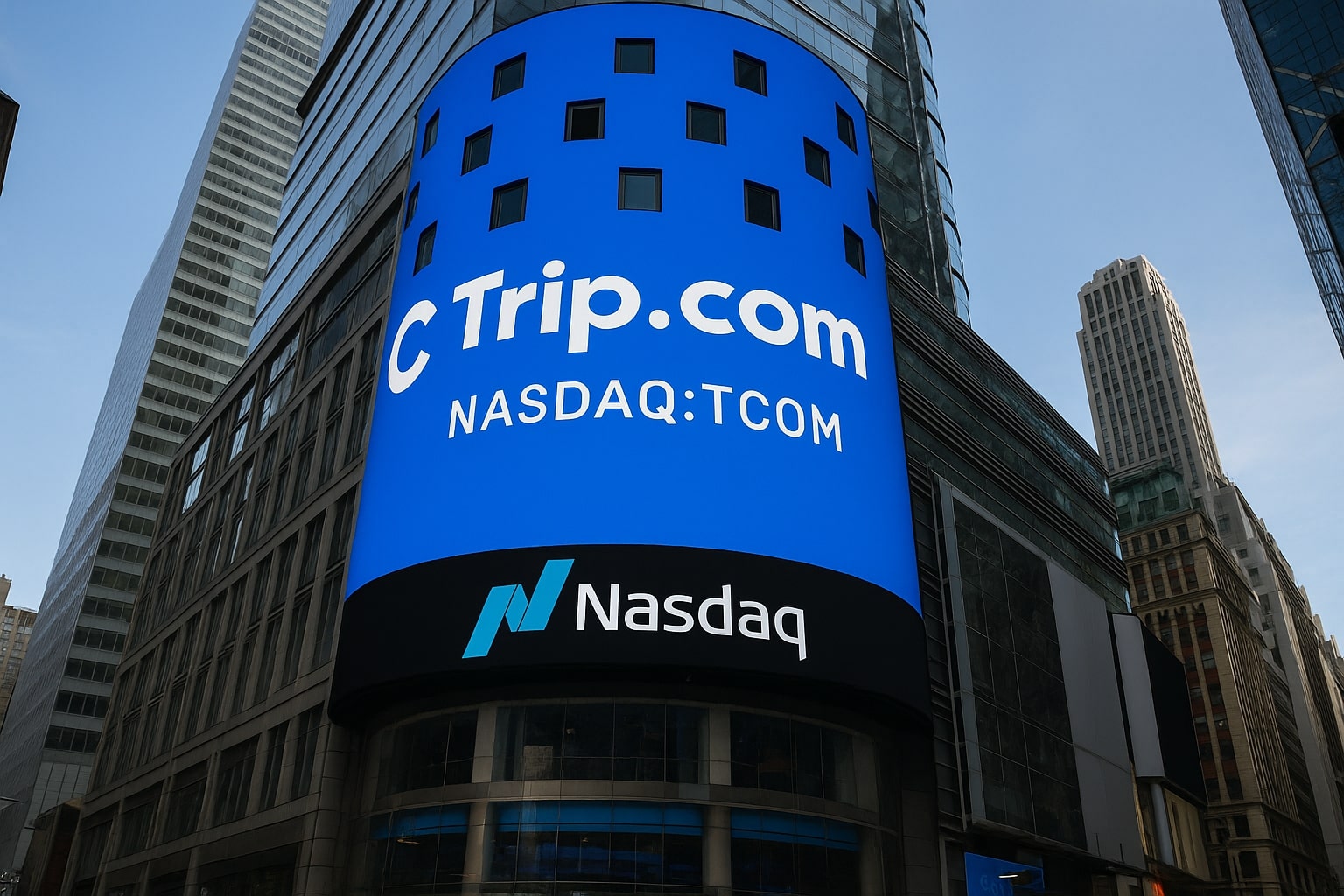
Trip.com Stock Forecast – NASDAQ:TCOM at $73.75 Gains on Global Travel Rebound
With Chinese inbound travel doubling and APAC bookings up 240%, Trip.com expands market share as valuation stays attractive | That's TradingNEWS
NASDAQ:TCOM Stock Performance and Market Position
Trip.com Group Limited (NASDAQ:TCOM) closed the last session at $73.75, slipping 1.70% on the day but holding near the upper end of its 52-week range between $46.20 and $77.18. With a market capitalization of $48.5 billion and a trailing P/E of 20.37, TCOM trades at a discount to global peers such as Booking Holdings (P/E ~38) and Expedia (P/E ~26). Revenue for the trailing twelve months reached $57.29 billion, up 16.2% year-on-year, while net income surged to $18.04 billion, lifting profit margins to 31.5%. EPS stood at $3.62 with forward estimates projecting $26.16 CNY for full-year 2025, underscoring double-digit growth expectations into 2026.
Revenue Drivers: Domestic, Inbound, and Outbound Travel
Trip.com’s revenue growth has been broad-based. Domestic hotel bookings in China rose more than 20% year-on-year, benefiting from 11.9 billion domestic cross-regional trips reported during July and August, with 8.7 billion self-driving trips showing demand resilience despite economic headwinds. Inbound travel has been a major upside surprise, with bookings doubling year-on-year in Q2 as Chinese visa-free policies attracted travelers from South Korea and Southeast Asia. National inbound travel grew 30% in H1, with 71% of Trip.com’s bookings coming from countries under new visa-free regimes. Outbound travel has also exceeded pre-pandemic levels, with outbound hotel and airfare bookings at 120% of 2019 volumes. Japan remains the top destination, while partnerships with Tourism New Zealand, Tourism Australia, and Middle Eastern agencies are diversifying growth.
Regional Expansion Across Asia-Pacific
The company’s strategy has been to consolidate its dominance across the Asia-Pacific region before aggressively scaling globally. In Q1, APAC hotel bookings jumped 240% compared to the prior year, underscoring strong traction outside of mainland China. This focus helps reduce costs and maximize returns while Trip.com builds its brand in markets where it already has a natural advantage. The expansion also positions TCOM to capture long-term demand as regional tourism infrastructure continues to improve and as intra-Asia travel becomes more affordable.
Financial Strength and Valuation Metrics
On the balance sheet, Trip.com reported total cash of 80.02 billion CNY, equal to roughly $11 billion USD, against total debt of 39.68 billion CNY, producing a conservative debt-to-equity ratio of 26.55%. The current ratio stands at 1.33, reflecting adequate liquidity. Operating margin was 27.6% and return on equity reached 12.96%, highlighting efficient use of capital. Compared to Expedia and Booking, Trip.com’s valuation appears favorable, with price-to-sales at 6.42 and EV/EBITDA at 14.43, both below sector averages. Analysts’ average price target of $82.15 implies an upside of more than 11% from current levels, while the high target of $97.25 suggests potential for 32% appreciation if growth momentum sustains.
Earnings, Marketing Spend, and Margins
Q2 results are expected to show revenue of $2.04 billion USD equivalent, a 13.7% increase year-on-year, but adjusted EPS is forecast to decline by nearly 15% to $0.87 due to heavy marketing investments. These short-term expenses pressured Q1 operating margins by over 220 basis points, but management has signaled that such costs are temporary and necessary to build scale, especially in APAC. Even with marketing headwinds, Trip.com’s trailing twelve-month operating margin of 27% and net profit growth of 26.4% year-on-year underscore the underlying strength of the business model.
Comparative Industry Landscape
While Booking Holdings has admitted it struggles to compete in China’s outbound travel segment, Trip.com’s local scale and competitive pricing give it a defensible edge. Expedia’s valuations remain higher, but growth is more modest compared to Trip.com’s 16% top-line expansion. The global online travel market remains cyclical, yet Trip.com’s leadership in Asia and its ability to capture both inbound and outbound flows in China give it structural advantages.
Insider and Institutional Activity
Insider transactions for NASDAQ:TCOM show limited insider holdings, with less than 1% insider ownership and approximately 29% held by institutions. This relatively low insider stake means governance is shaped heavily by institutional investors, and short interest remains modest at 1.65% of outstanding shares, with a short ratio of 3.8. Such levels suggest no significant bearish positioning against the stock at present.
Dividend Policy and Capital Allocation
Trip.com initiated a forward annual dividend of $0.30 per share, representing a modest 0.41% yield and a payout ratio of just 8.41%. This conservative policy allows the company to return cash to shareholders while retaining most earnings for reinvestment in expansion, marketing, and technology. Given the high free cash flow potential and a cash reserve exceeding $11 billion, management has room to consider future dividend hikes or buybacks, though the emphasis remains on growth.
Investment Outlook for NASDAQ:TCOM
With the stock trading at $73.75, only 4% off its 52-week high of $77.18, Trip.com offers a compelling mix of growth and value. Inbound and outbound travel demand, combined with Chinese government support for tourism, are powerful tailwinds. While margin pressure from marketing is real in the short run, the strategic expansion across APAC and attractive relative valuation underpin the long-term investment case. On balance, NASDAQ:TCOM is a Buy, with upside targets stretching toward $85–$97 as revenue growth remains resilient and the company continues to leverage its dominant market position.
That's TradingNEWS
Read More
-
AbbVie Stock Price Forecast - ABBV at $229 Turns the Humira Cliff Into a 2026 Growth Engine
02.01.2026 · TradingNEWS ArchiveStocks
-
XRP Price Forecast - XRP-USD Nears $2 as $1.80 Support and Shrinking Supply Point to $2.60 Target
02.01.2026 · TradingNEWS ArchiveCrypto
-
Oil Price Forecast - Oil Slide Into 2026: WTI Stuck at $57, Brent at $60
02.01.2026 · TradingNEWS ArchiveCommodities
-
Stock Market Today: Nasdaq Hits 23,467 as Nvidia (NVDA), Micron (MU) and Baidu (BIDU) Drive AI Surge
02.01.2026 · TradingNEWS ArchiveMarkets
-
GBP/USD Price Forecast: Pound Holds 1.3450 as Fed–BoE Split Keeps Bulls Aiming at 1.37
02.01.2026 · TradingNEWS ArchiveForex


















